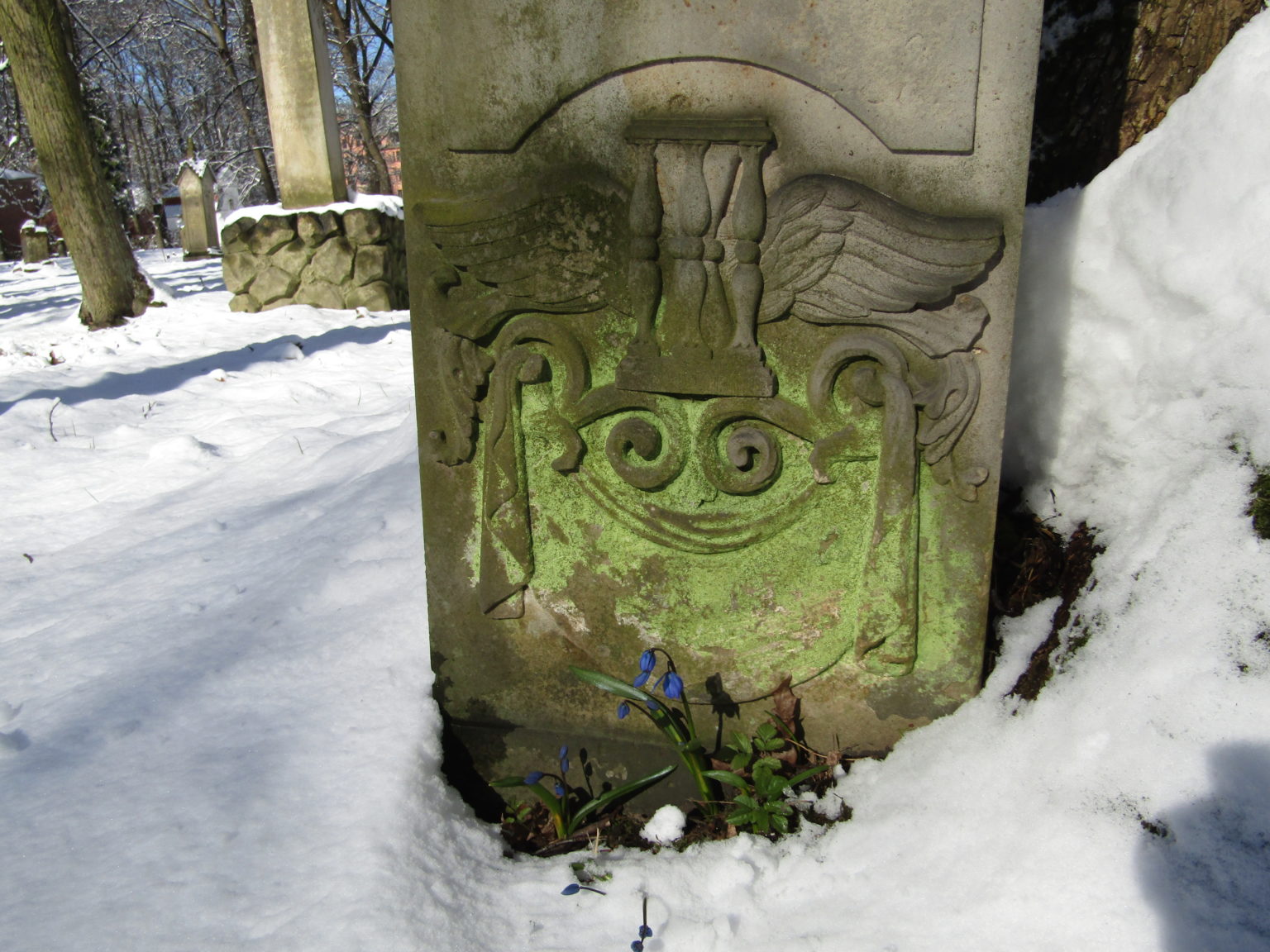Monuments to world-renowned personalities – impressive cast figures, equestrian statues, or stelae with busts – are erected in city squares. The place that keeps the memory of less famous people is cemeteries.
Wander around an old cemetery. You’ll see hundreds of gray tomb crosses and headstones overgrown with moss. Allow them to speak to you.
Language of Burial Monuments
I live in Riga, the capital of Latvia. My house is five minutes walk from the local Great Cemetery – in Latvian, Lielie kapi. It got its name due to its size: the total area of Lielie kapi reaches almost 37 hectares. Nowadays, nobody can say how many Rigans found their final rest in it but we know that they were the Baltic Germans for the most part.
Carvings and reliefs on their grave markers are typical of the European memorial objects dating back to the18th and 19th centuries.
Some of these icons are easy to understand (for instance, you will quickly guess what a heart or a skull means); deciphering others is tricky.
I have taken photos of several cemetery symbols, enigmatic or simply beautiful ones.
Celestial Bodies
The energy of sunlight makes it possible for people, animals, and plants to exist on Earth, so the sun represents life in the broadest sense of the word. The suns adorning gravestones usually have the shape of a semicircle.
While looking at such an image, we don’t understand what it denotes – whether sunset or dawn. This ambiguity is intentional: for a Christian, demise is a step to the soul’s resurrection in an ideal world.
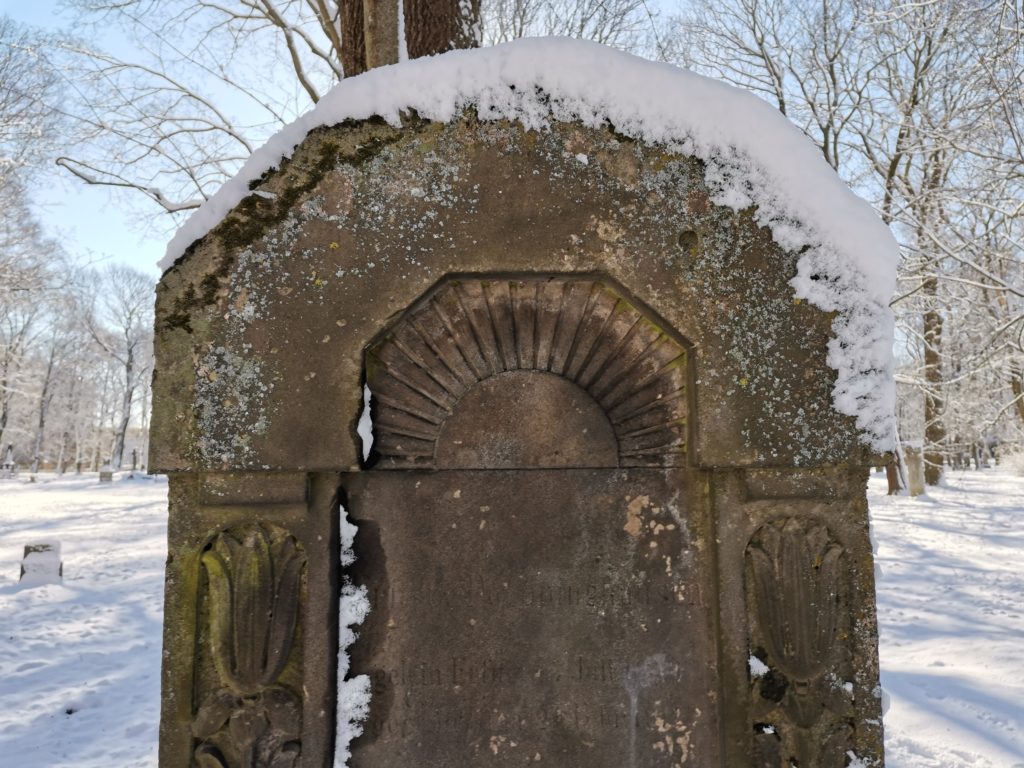
Stars are another sign related to Christianity.
Five points of the star in the photo below may serve as a reminder of Jesus’ torments (crucified on the cross, the Son of Man suffered from five wounds – one through each hand or wrist, one through each foot, and one to the chest).

I do not exclude, however, that the customers of this monument asked the sculptor to carve the star as a heavenly guide for the dear person they lost.
Plants
There are incredibly realistic stone tree stumps among the real old tree trunks of the Great Cemetery.
Nature itself helped them become so lifelike: winds and rains chipped their surface; lichens covered them.
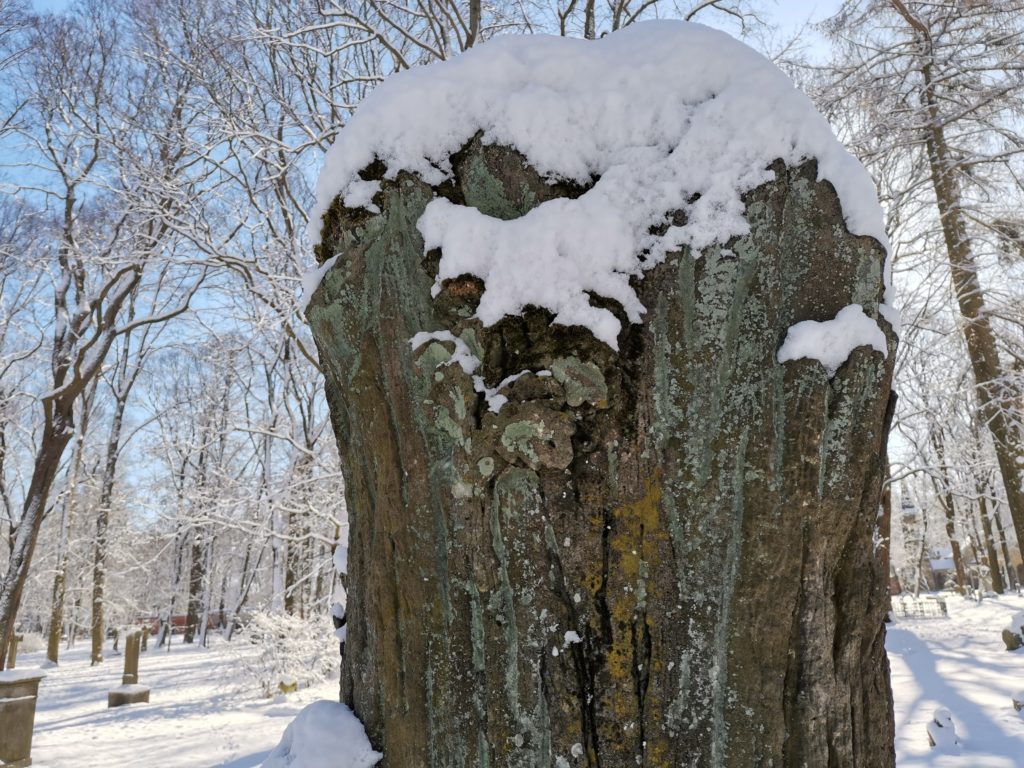
The artificial tree stumps without branches remind us of how tragic death is.
If you come closer to a tombstone similar to a stump, you would likely find it decorated with oak leaves with aсorns peeking out from behind them. Oak expresses strength and endurance, and acorns allude to the fertility of the deceased.
A person whose remains are buried under this tombstone has left offspring:
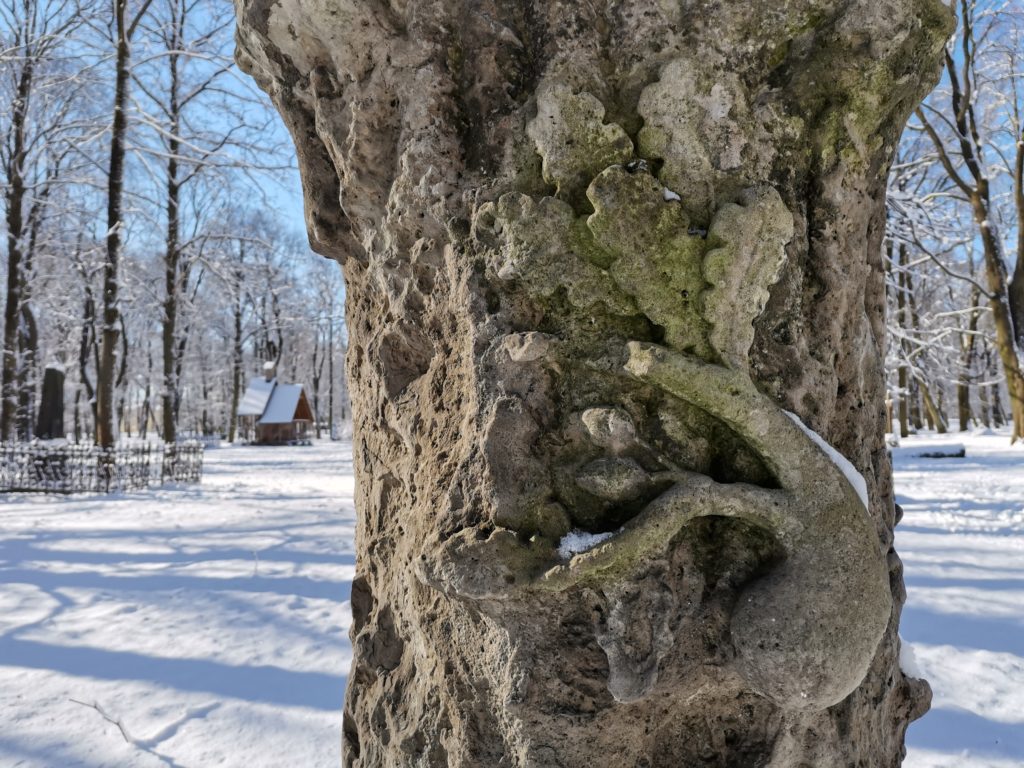
The peculiar shape of the headstone is not the only possible hint to the particular person’s destiny.
A broken flower, especially a lily, was used to highlight the purity of a child or a woman who passed away prematurely.
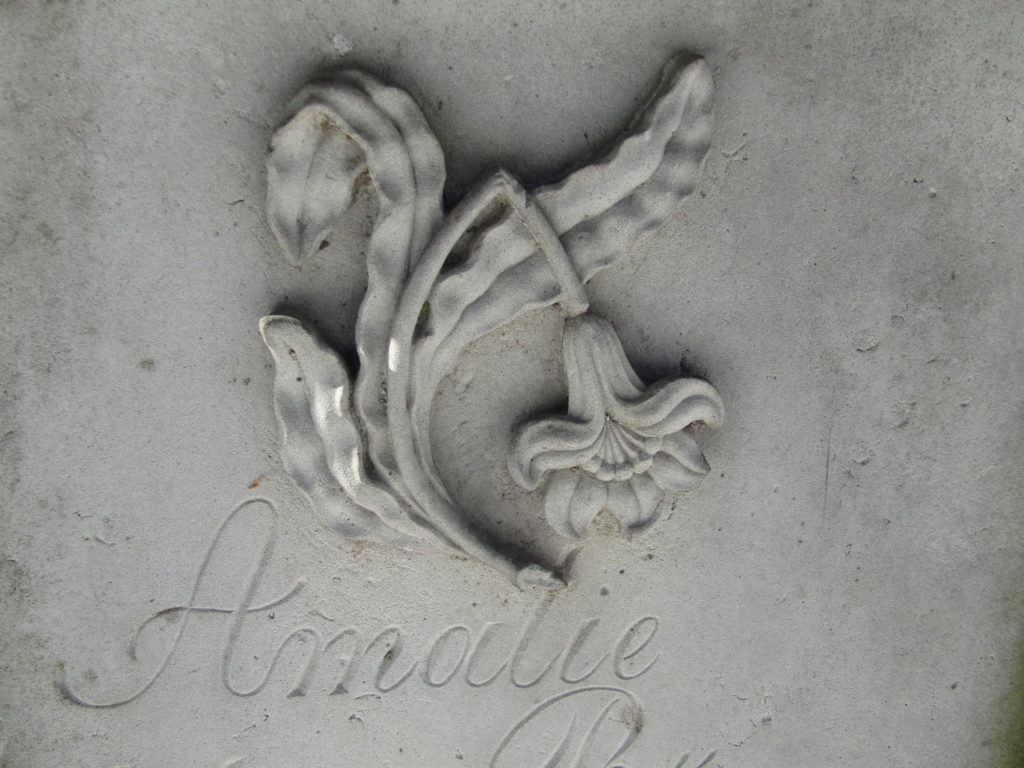
The graceful flower you see above was carved in memory of a woman named Amalie; she died at the age of 41.
The symbol opposite to the broken lily in meaning is a sheaf of wheat.
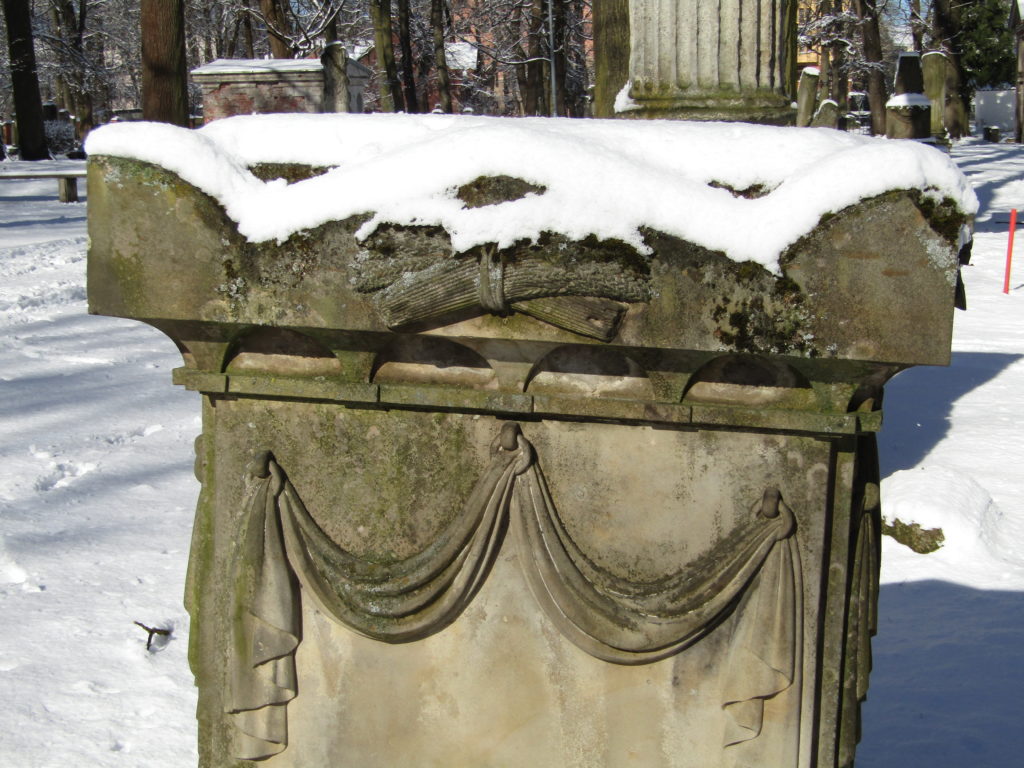
Wheat wants to be cut – otherwise, it will not turn into flour and then into bread. A long, fruitful life ends without despair.
Both memorial tree stumps and regular crosses sometimes are gently embraced with ivy.
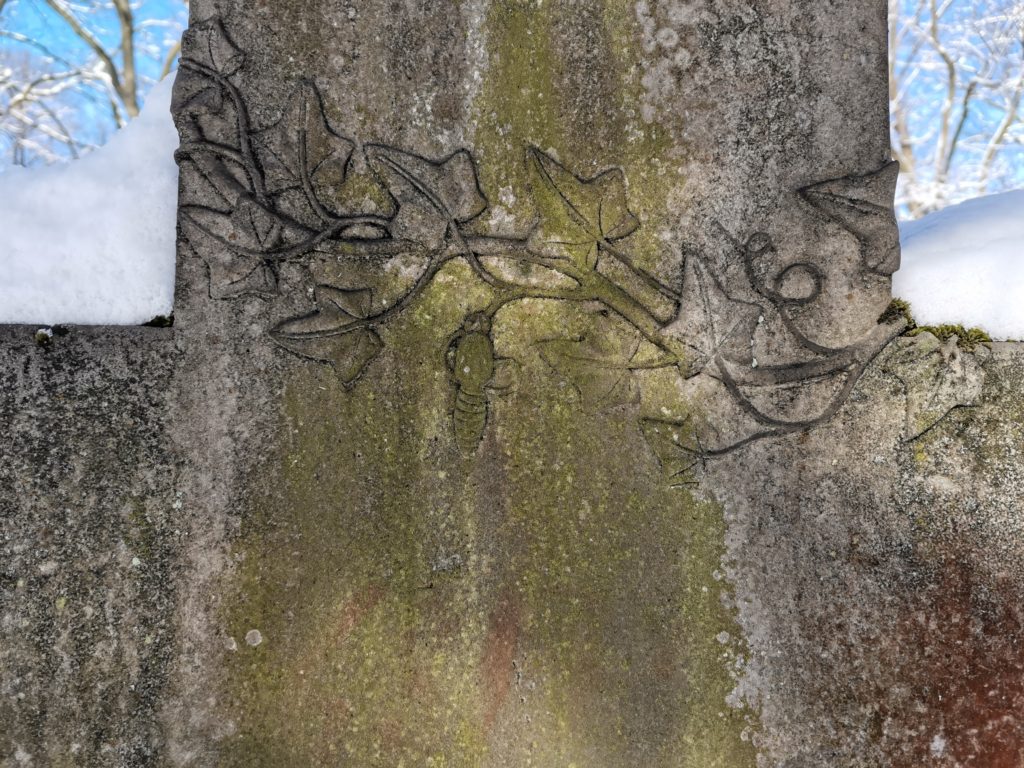
Real green leaves of ivy wilt under the snow, yet their stone copies cling to grave monuments in any season.
They testify to everlasting memory and love.
Living Beings
The butterfly is probably the most common and, at the same time, the most unobtrusive symbol among those can be found on the tombstones of the Great Cemetery in Riga. As a rule, it modestly complements the main composition and is placed on the backside of the gravestone.
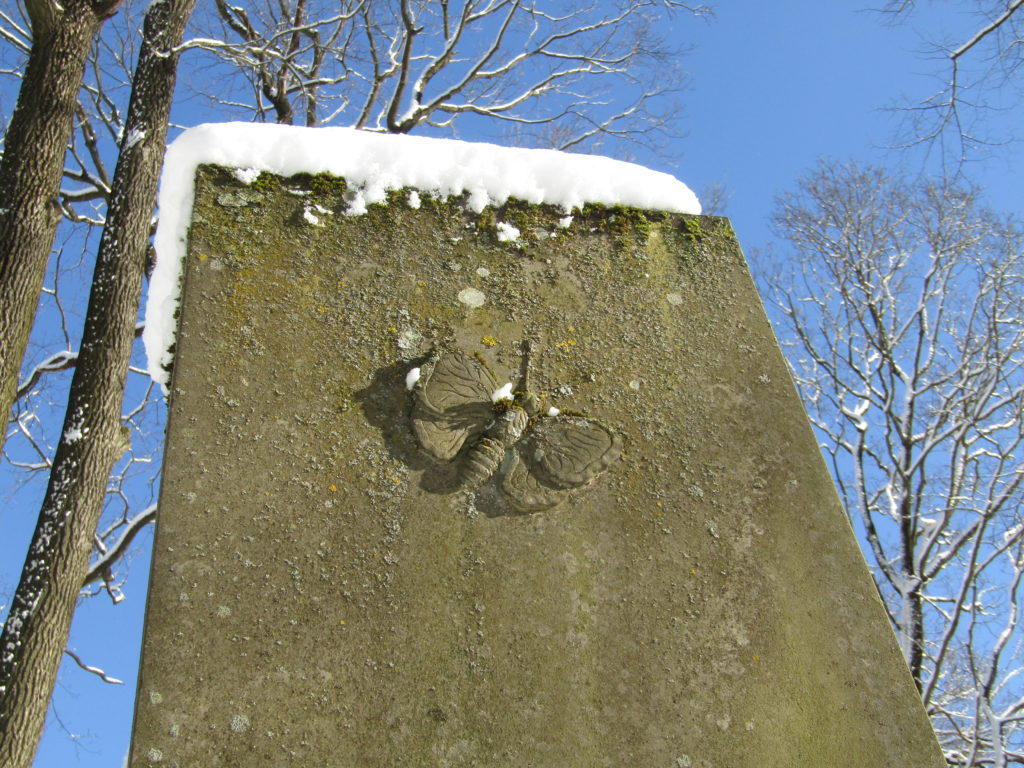
Butterflies indicate the resurrection of a human in a more perfect form. Here, on sinful earth, we people are like caterpillars; in heaven, our souls will gain wings – of course, providing that we were trying to live honestly. The soul should labor.
The main symbol of diligent work – the bee – sometimes decorates tombstones too. These bees almost always “fly” near a hive that, in its turn, signifies a bloodline.
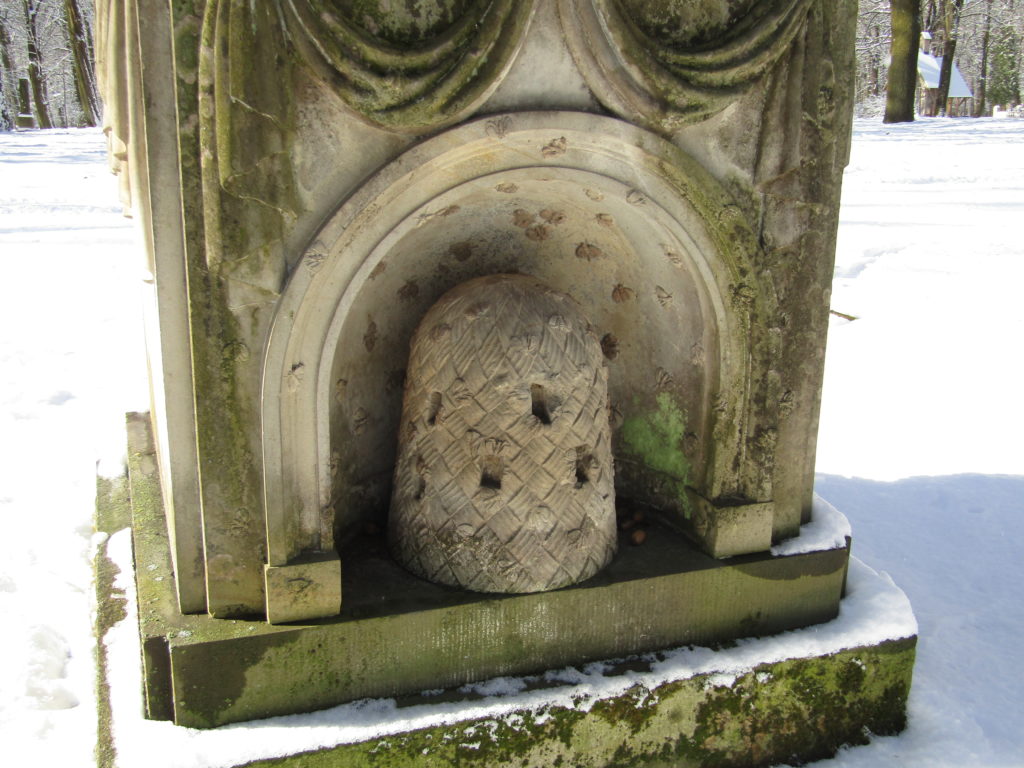
Let me show you one more creature from the world of cemetery symbols, a snake.
This is not the treacherous biblical snake that persuaded Eve to eat the forbidden fruit; the so-called ouroboros – a serpent swallowing its own tail – is the allegorical image that entered Western tradition via ancient Egyptian iconography.
It embodies the idea of spiritual striving.
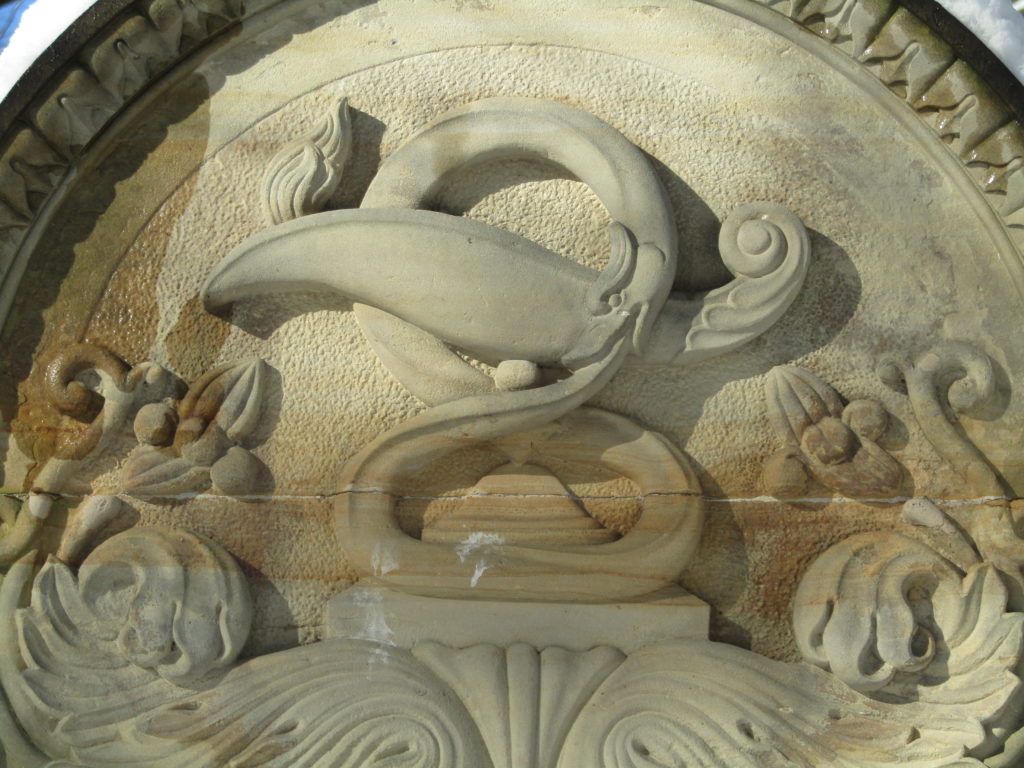
The serpent in the photograph is curled around an oil lamp. The latter is also associated with lust for knowledge.
The photo depicts a tombstone fragment over the grave where philosopher Johann Christoph Brotze was buried.
Brotze contributed to culture thanks to his original hobby: a true child of the Enlightenment, he thoroughly drew everything that attracted his attention – buildings, armorial bearings, coins, technical appliances, etc. Brotze’s drawings provided unique materials for subsequent generations of historians.
Inanimate Objects
In the 19th century, tombstones were very often crowned with roundish containers. These vessels aren’t vases but funeral urns.
There aren’t ashes in them, though. They, by and large, are just a tribute to fashion for everything related to classical Greco-Roman culture (for the ancient Greeks, cremation was the usual form of preparing the dead for burial).
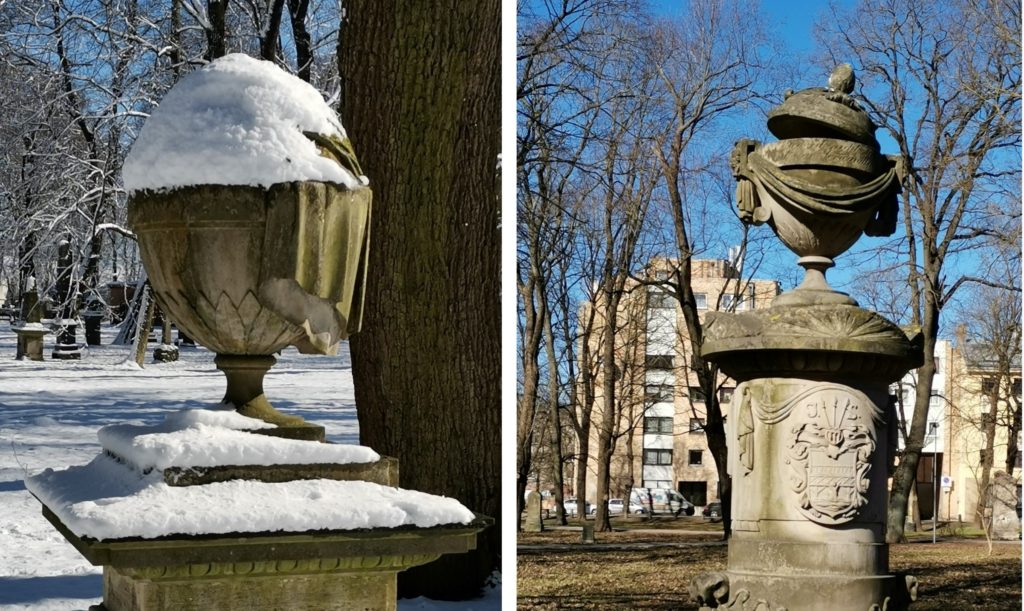
In the picture on the right, the urn is ajar. Having shifted its lid, the sculptor complicated the symbol. He emphasized that the soul, unlike the body, does not burn out; it rushes to the Lord despite any obstacles.
Finally, I’ll tell you about my favorite headstone icon. It literally illustrates the saying ‘time flies’.
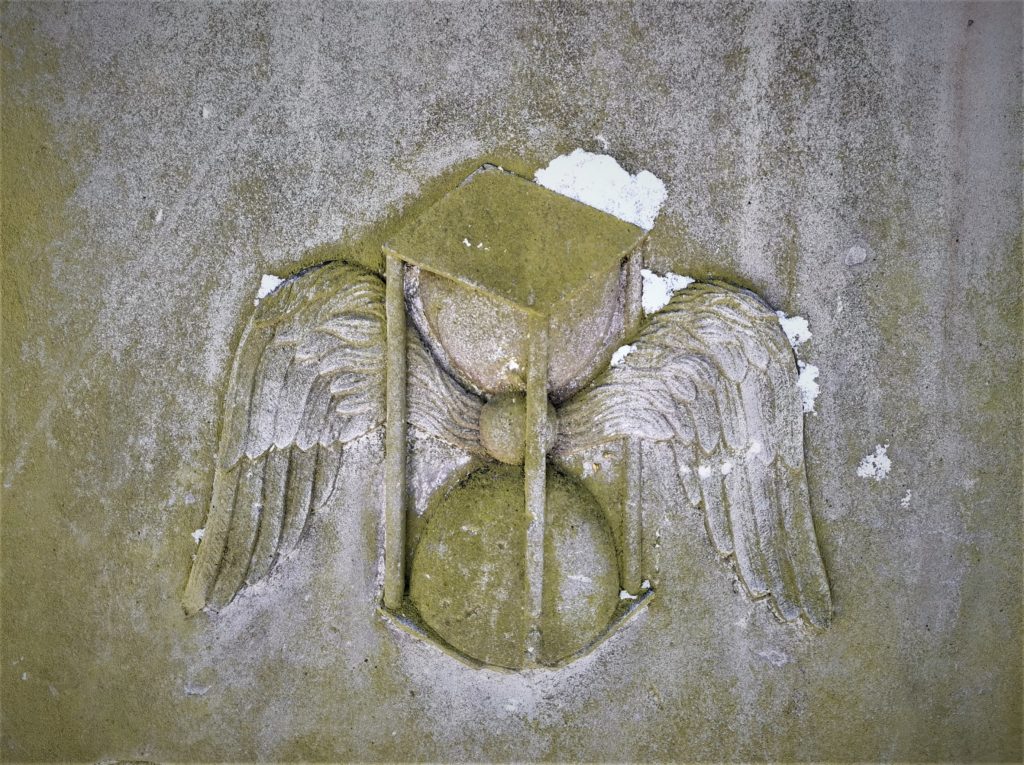
“Life is so short, please don’t waste it!” – the dead remind us. The grains of sand are falling and falling…
I would like to believe that when all the sand in the hourglass of my fate runs out, someone’s kind hand will turn them over.
